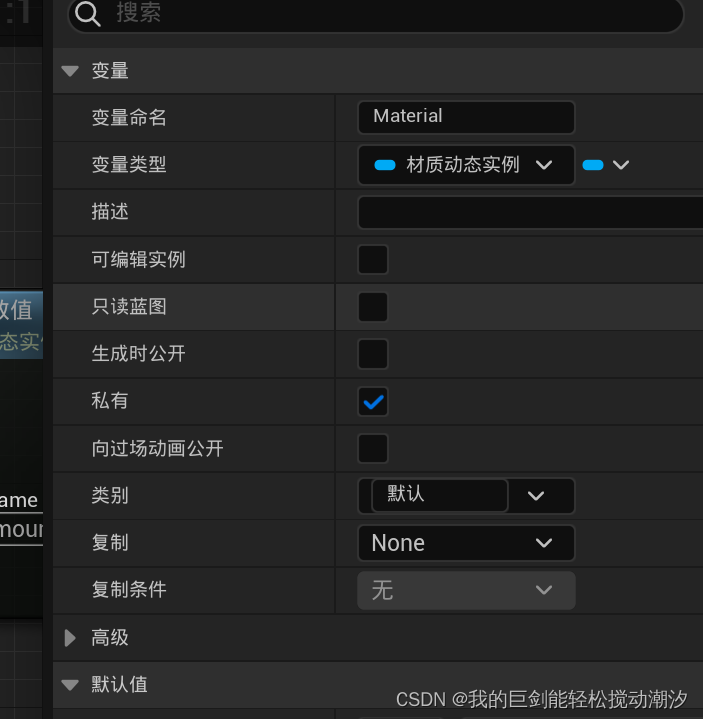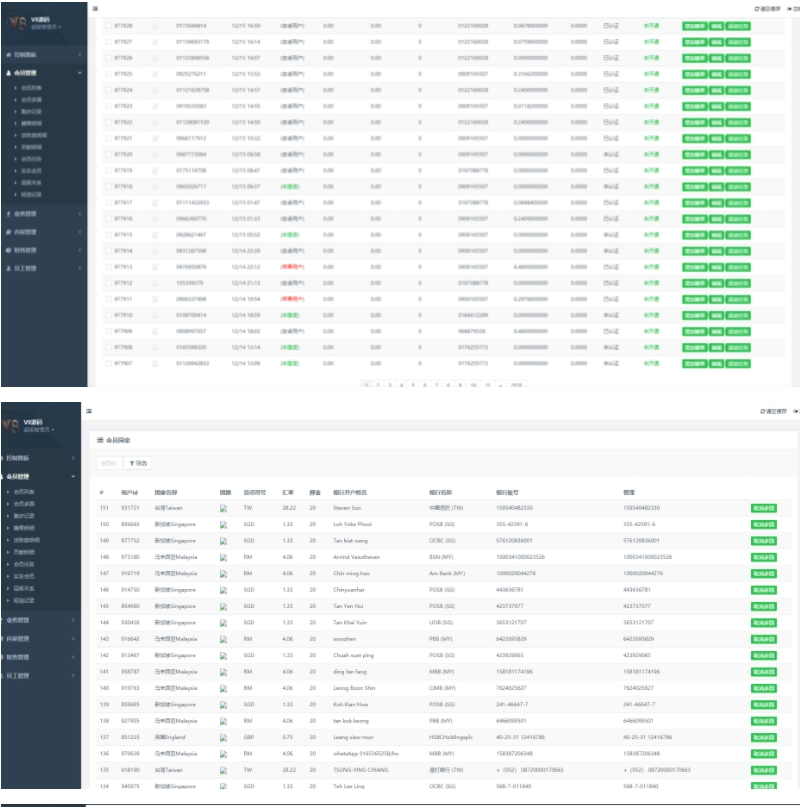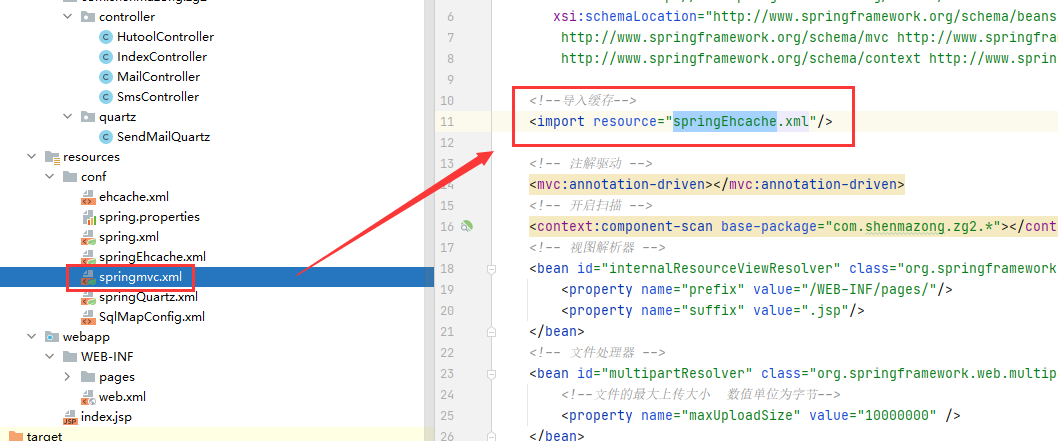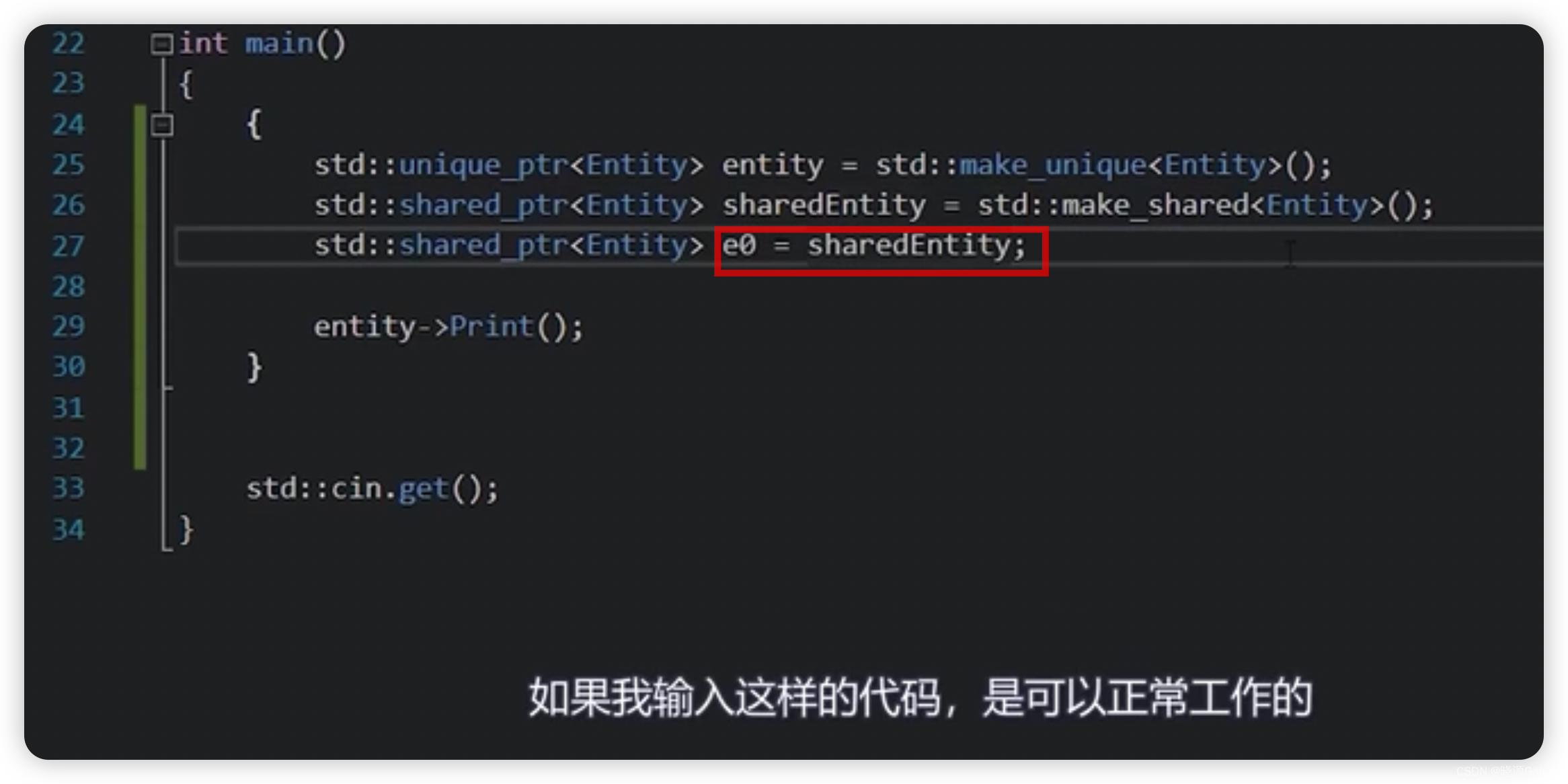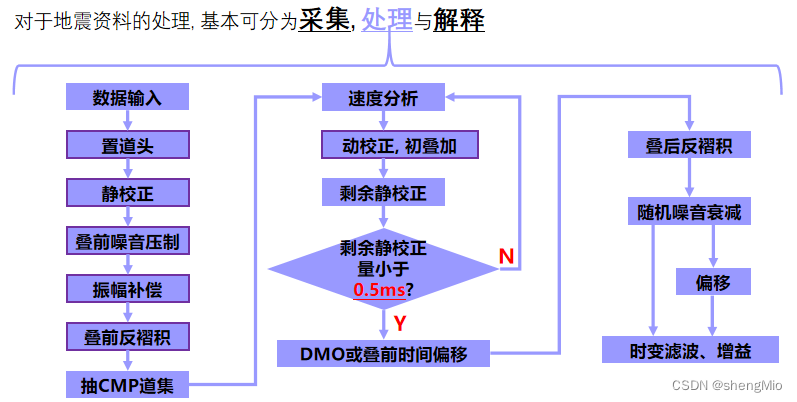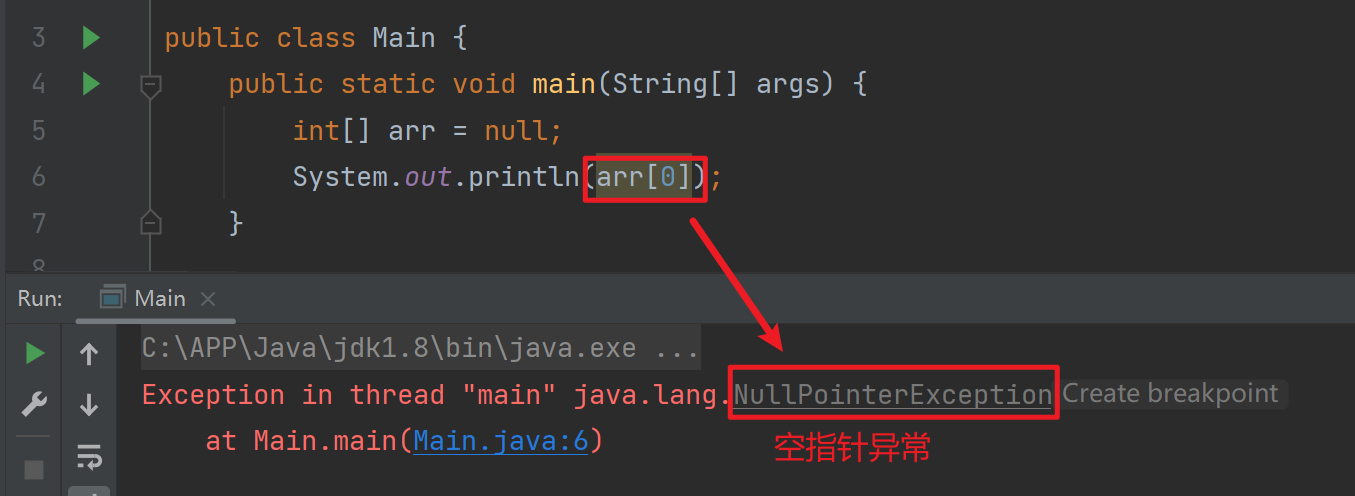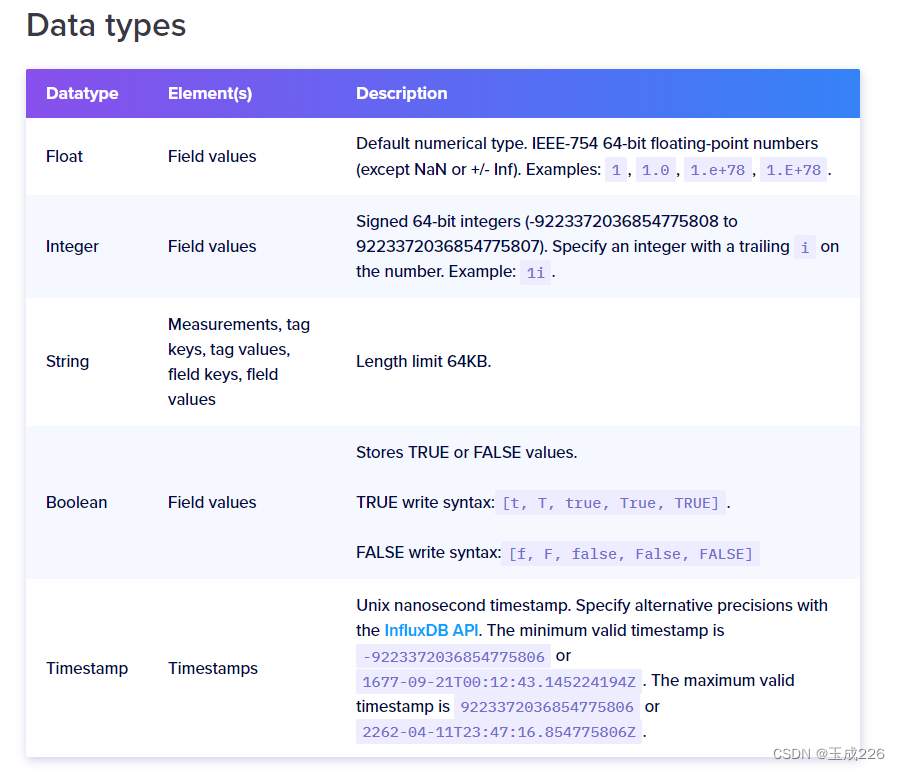SemaphoreSlim是一个用于同步和限制并发访问的类,和它类似的还有Semaphore,只是SemaphoreSlim更加的轻量、高效、好用。今天说说它,以及如何使用,在什么时候去使用,使用它将会带来什么优势。
代码的业务是:
在多线程下进行数据的统计工作,简单点的说就是累加数据。
1.首先我们建立一个程序
代码如下
using System;
using System.Collections.Generic;
using System.Diagnostics;
using System.Linq;
using System.Text;
using System.Threading;
using System.Threading.Tasks;
namespace ConsoleApp2
{
class Program
{
static int a = 0;
static async Task Main(string[] args)
{
Stopwatch stopwatch = new Stopwatch();
stopwatch.Start();
Task t1 = Task.Run(() =>
{
A();
});
Task t2 = Task.Run(() =>
{
B();
});
await Task.WhenAll(t1, t2);
stopwatch.Stop();
Console.WriteLine("总时间:" + stopwatch.ElapsedMilliseconds);
Console.WriteLine("总数:" + a);
Console.ReadLine();
}
private static void A()
{
for (int i = 0; i < 100_0000; i++)
{
a++;
}
}
private static void B()
{
for (int i = 0; i < 100_0000; i++)
{
a++;
}
}
}
}2.运行结果
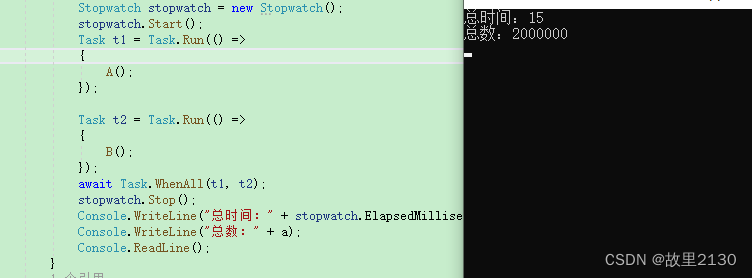
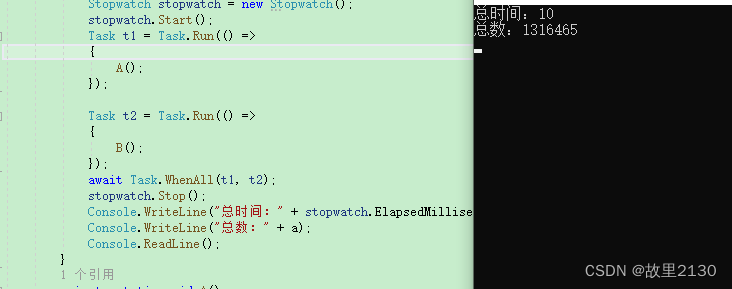
此时需要多运行几次,会发现,偶尔出现运行的结果不一样,这就是今天的问题
3.分析结果
从结果看,明显错误了,正确答案是:200 0000,但是第二次的结果是131 6465。我们的业务就是开启2个线程,一个A方法,一个B方法,分别对a的数据进行累加计算。那么为什么造成这样的结果呢?
造成这样的原因就是多线程的问题。
解决方法一:
1.使用lock
using System;
using System.Collections.Generic;
using System.Diagnostics;
using System.Linq;
using System.Text;
using System.Threading;
using System.Threading.Tasks;
namespace ConsoleApp2
{
class Program
{
static int a = 0;
static object o = new object();
static async Task Main(string[] args)
{
Stopwatch stopwatch = new Stopwatch();
stopwatch.Start();
Task t1 = Task.Run(() =>
{
A();
});
Task t2 = Task.Run(() =>
{
B();
});
await Task.WhenAll(t1, t2);
stopwatch.Stop();
Console.WriteLine("总时间:" + stopwatch.ElapsedMilliseconds);
Console.WriteLine("总数:" + a);
Console.ReadLine();
}
private static void A()
{
for (int i = 0; i < 100_0000; i++)
{
lock (o)
{
a++;
}
}
}
private static void B()
{
for (int i = 0; i < 100_0000; i++)
{
lock (o)
{
a++;
}
}
}
}
}2. lock的结果
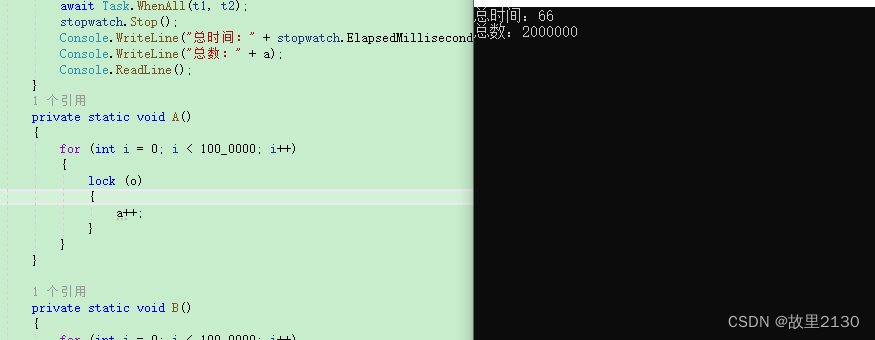
当我们增加lock后,不管运行几次,结果都是正确的。
解决方法二:
1.使用SemaphoreSlim
using System;
using System.Collections.Generic;
using System.Diagnostics;
using System.Linq;
using System.Text;
using System.Threading;
using System.Threading.Tasks;
namespace ConsoleApp2
{
class Program
{
static int a = 0;
static object o = new object();
static SemaphoreSlim semaphore = new SemaphoreSlim(1); //控制访问线程的数量
static async Task Main(string[] args)
{
Stopwatch stopwatch = new Stopwatch();
stopwatch.Start();
Task t1 = Task.Run(() =>
{
A();
});
Task t2 = Task.Run(() =>
{
B();
});
await Task.WhenAll(t1, t2);
stopwatch.Stop();
Console.WriteLine("总时间:" + stopwatch.ElapsedMilliseconds);
Console.WriteLine("总数:" + a);
Console.ReadLine();
}
private static void A()
{
for (int i = 0; i < 100_0000; i++)
{
semaphore.Wait();
//lock (o)
//{
a++;
//}
semaphore.Release();
}
}
private static void B()
{
for (int i = 0; i < 100_0000; i++)
{
semaphore.Wait();
//lock (o)
//{
a++;
//}
semaphore.Release();
}
}
}
}2.SemaphoreSlim的效果
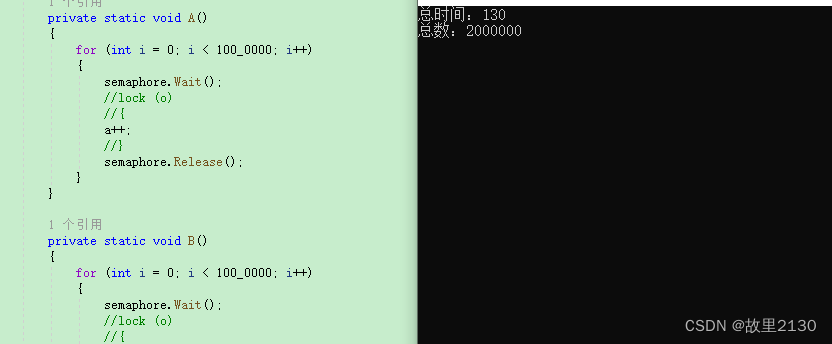
当我们增加SemaphoreSlim后,不管运行几次,结果都是正确的。
4.我们对比方法一和方法二发现,他们的结果都是一样的,但是lock似乎比SemaphoreSlim更加的高效,是的,lock解决此业务的确比SemaphoreSlim高效。但是lock能干的事,SemaphoreSlim肯定能干,SemaphoreSlim能干的事,lock不一定能干。
5.SemaphoreSlim的使用
SemaphoreSlim使用的范围非常的广,可以限制访问资源的线程数,例如限制一个资源最多5个线程可以同时访问
using System.Threading;
class Program
{
static SemaphoreSlim semaphore = new SemaphoreSlim(5); // 允许最多5个线程同时访问资源
static void Main()
{
for (int i = 0; i < 10; i++)
{
Task.Run(DoWork);
}
Console.ReadLine();
}
static async Task DoWork()
{
await semaphore.WaitAsync(); // 等待许可
try
{
Console.WriteLine($"线程 {Thread.CurrentThread.ManagedThreadId} 开始工作");
await Task.Delay(1000); // 模拟耗时操作
Console.WriteLine($"线程 {Thread.CurrentThread.ManagedThreadId} 结束工作");
}
finally
{
semaphore.Release(); // 释放许可
}
}
}
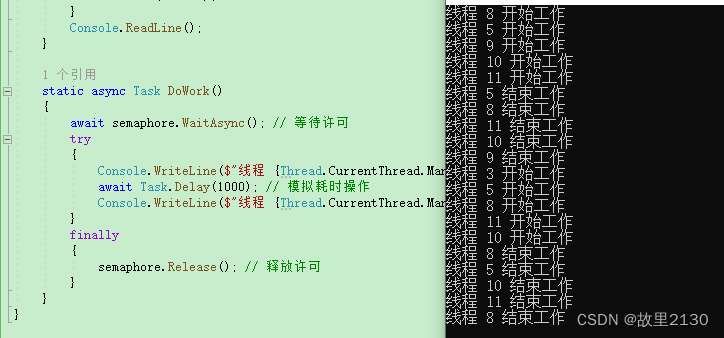
此时DoWork()这个方法,最多同时只有5个线程访问,当改成1个,就是按照顺序进行了,和lock的使用是一样的
6.总结
如果需要确保同一时间只有一个线程访问某资源(此案例指的就是变量a),那么可以使用Lock,也可以使用SemaphoreSlim;如果需要控制同时访问资源的线程数量,并且需要更复杂的信号量操作,那么可以使用SemaphoreSlim。总之,使用Lock还是SemaphoreSlim,都是根据具体业务而定。
拓展:
当我们在第1步,只需要增加一句话,不增加lock和SemaphoreSlim,依然可以使得计算的结果准确,那就是增加
Console.WriteLine(a);充当了线程同步的作用
using System;
using System.Collections.Generic;
using System.Diagnostics;
using System.Linq;
using System.Text;
using System.Threading;
using System.Threading.Tasks;
namespace ConsoleApp2
{
class Program
{
static int a = 0;
static async Task Main(string[] args)
{
Stopwatch stopwatch = new Stopwatch();
stopwatch.Start();
Task t1 = Task.Run(() =>
{
A();
});
Task t2 = Task.Run(() =>
{
B();
});
await Task.WhenAll(t1, t2);
stopwatch.Stop();
Console.WriteLine("总时间:" + stopwatch.ElapsedMilliseconds);
Console.WriteLine("总数:" + a);
Console.ReadLine();
}
private static void A()
{
for (int i = 0; i < 10_0000; i++)
{
a++;
Console.WriteLine(a);
}
}
private static void B()
{
for (int i = 0; i < 10_0000; i++)
{
a++;
Console.WriteLine(a);
}
}
}
}效果
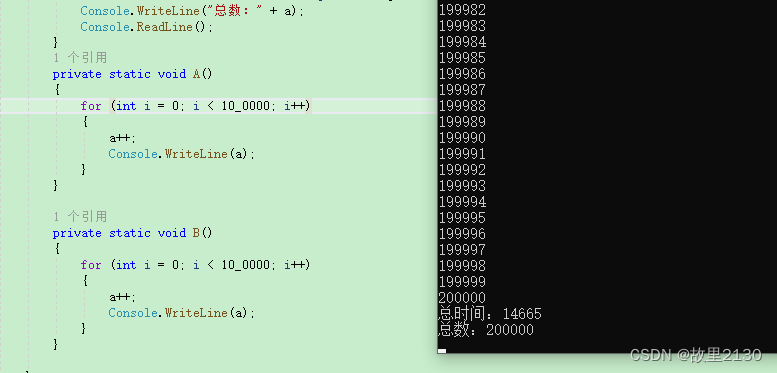
本文源码:
https://download.csdn.net/download/u012563853/88714363
本文来源:
c#多线程中使用SemaphoreSlim-CSDN博客

